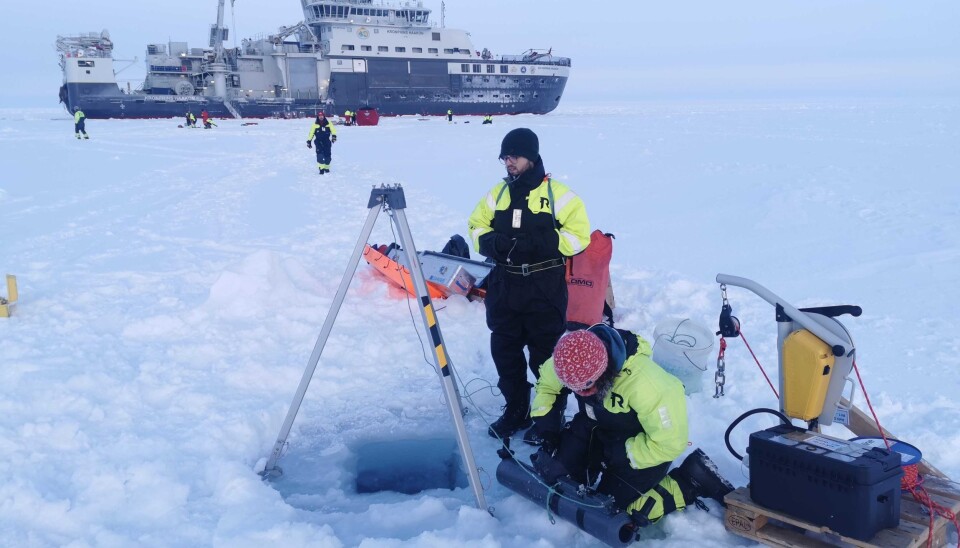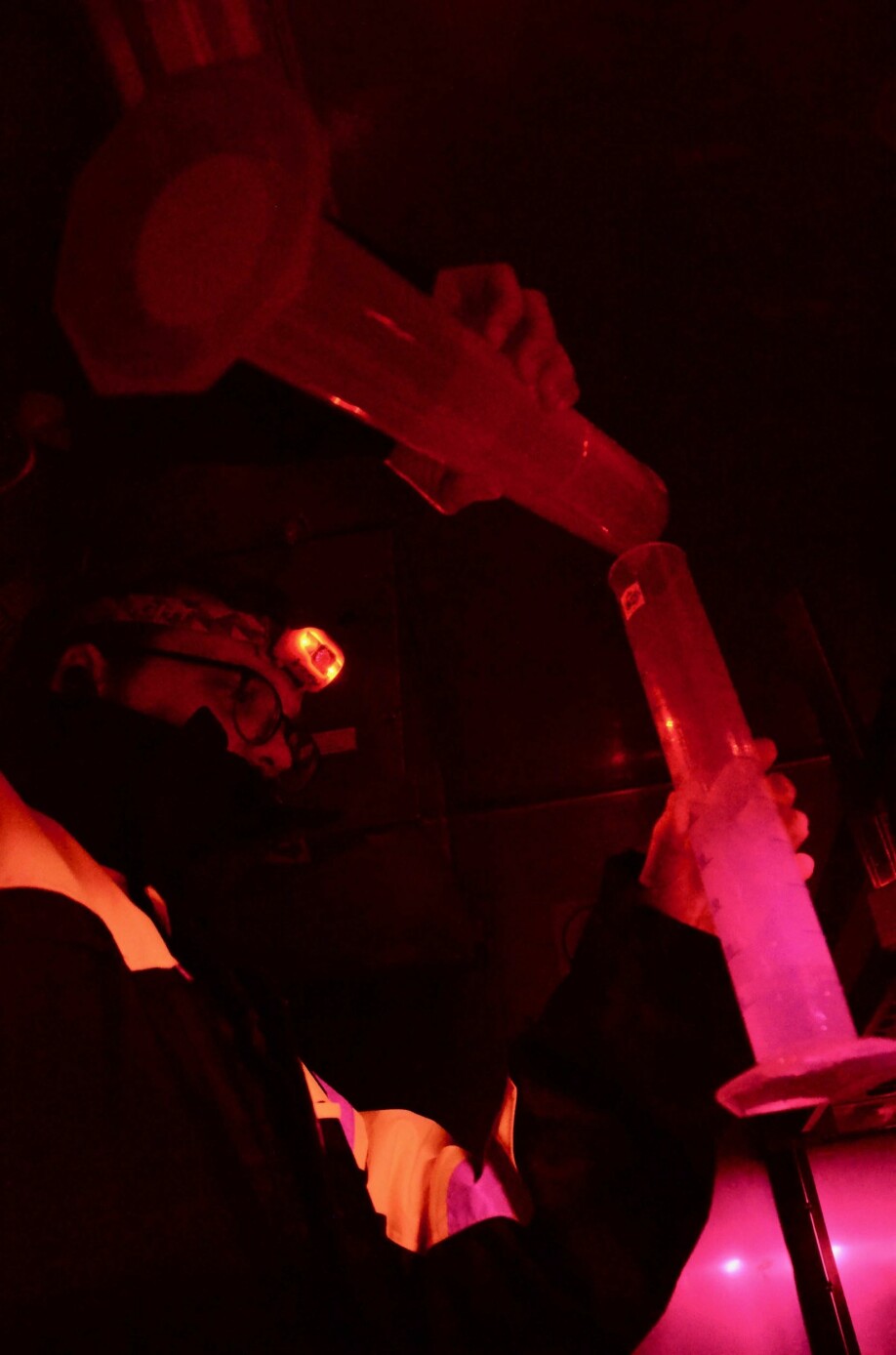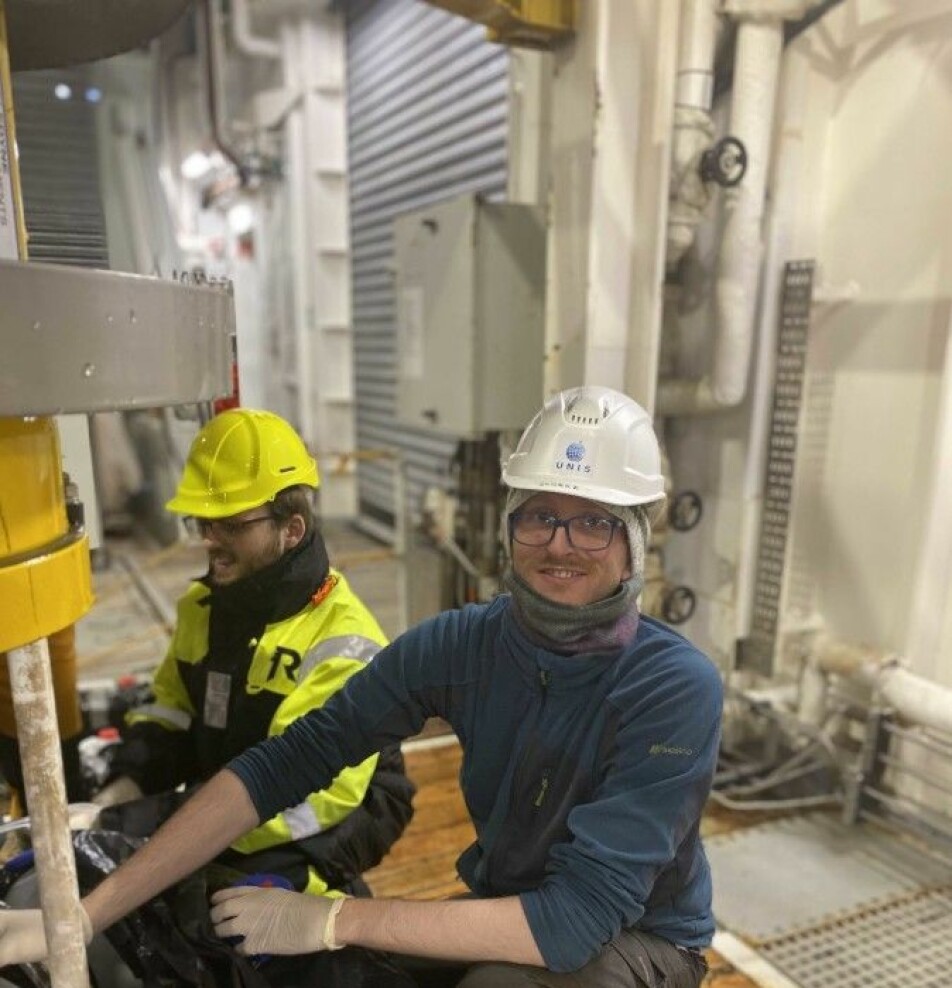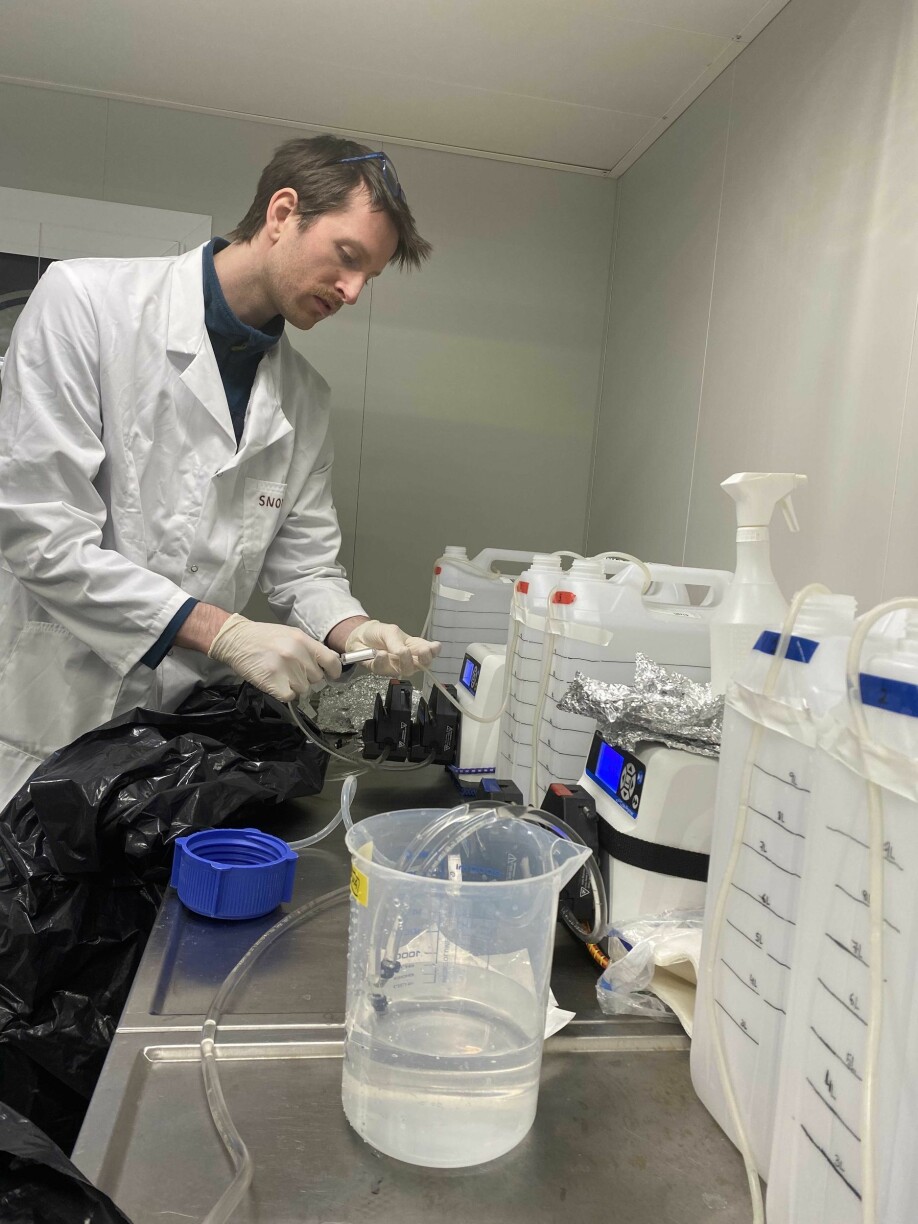
The hunt for the hidden life in water
Life on board a research vessel has its own and unique rhythm. Time operates a little differently here, both because days are a bit intense with sample collection and analysis, but also because the ship simply has its own time zone.
When doing research in the Arctic at this time of year, it is important to follow the sun as best you can. One consequence of this is that the higher powers on board RV Kronprins Haakon have decided that we will be two hours ahead of normal time on the Norwegian mainland. Sun is a precious resource in the Arctic in March, so in order to make the most of each day, we simply define the time ourselves.

In addition to the fact that time has become an abstract concept, life has begun to be defined by water. How much water should we collect? How much water should we filter? How long will it take to melt one ice core so we can filter it? Am I really thirsty or am I just thinking too much about water? During our stay on board RV Kronprins Haakon, we will have filtered close to 1000 liters of water, an amount that is difficult to relate to. But what's the point of filtering so much water? In these 1000 liters from the sea and ice, we can find a lot of information. It can be small living cells (microorganisms), dead material, yes, even remnants from the mustache of a walrus. We are looking for everything that lives, and traces of everything that has lived.
Catching Arctic DNA
By filtering water, we can capture this on small filters. The small filters are then quickly frozen down, and after the cruise, they come with us back to the lab. Here we extract the genetic material DNA and study it using a method called «DNA metabarcoding». The method is based on sequencing (see fact box), which largely is about describing the order of the DNA letters in a gene that the microorganisms have in common.
If we compare the sequences we have found on cruises, with those that have already been described and uploaded to reference databases, we can determine the species composition of organisms in the water. In addition, we can find out which species dominate or are absent and how high the diversity in the water mass is.

The legacy of Nansen
This type of information is obviously not new. For hundreds of years, scientists and adventurers such as Fridtjof Nansen have described microorganisms in the Arctic. The advantage of meta barcoding, on the other hand, is that you do not have to look through enormous amounts of seawater under a microscope. This gives us time to collect more samples that can be analyzed afterwards. In addition, the microorganisms form an incredibly diverse community, and it takes several years of experience and training to recognize these little creatures with certainty. The DNA meta barcoding makes the job a little easier for us who do not have decades of microscopy experience on our backs.
In addition, we create algae cultures and other water samples that will be analyzed in different ways and linked to the results from the DNA sequencing from the metabarcoding. This means that one can hopefully form a holistic picture of the composition of life in the water masses and ice in the Arctic.
During 2021, there will be two different research cruises through the Nansen Legacy project, and we are now on the Q1 cruise. There are few algae in the water masses, almost as if life has been put on hold until spring arrives, and the great spring bloom of phytoplankton takes place. In the Arctic, winter is still holding on and even though the days are getting a little longer and the sun is shining a little more, life has not fully woken up yet.

Compare cruises
By comparing the results from the work we do on board the boat now on the Q1 cruise with the research cruises Q2 (planned for May 2021), Q3 (completed August 2019) and Q4 (completed December 2019), we will be able to get an overview of how life in the water and the ice changes during the year and over the seasons. This will also give us important knowledge about the effect of climate change on the Arctic ecosystem. Will warmer sea temperatures cause new species to move into the Arctic? What will be the effect of new species on the species that are already present? Are the light conditions so extreme that even if climate change provides more favorable conditions, species that are not adapted to it will be prevented from gaining a foothold here? What will the Arctic ecosystem look like in 10 or 20 years if the effects of climate change are not curbed?
A bit like life on board a research vessel, life in the Arctic has a rhythm. It follows the sun and the darkness, and waits for spring to reach 80 degrees north as well. Who knows in detail what tomorrow will bring for the Arctic. For us in the filtration team, in contrast, tomorrow is pretty clear: water and more water again.







